I received the Thrunite TN30 Mini NW 2016 edition from Thrunite for the review.
5% Discount! Coupon Code:THRUNITE, For Official Website Only http://www.thrunite.com/thrunite-mini-tn30-2016-xp-l-flashlight/
Amazon US: Amazon.com: ThruNite
Amazon DE: http://amazon.de/shops/A2DUUB2J3TY3X1
The TN30 Mini is the smaller version of the old, big, flood light TN30.
The Thrunite Mini maintains the flood beam, and the 2016 edition features 3 CREE XP-L emitters, powered by 4 18650 cells.
The TN30 Mini comes in this box
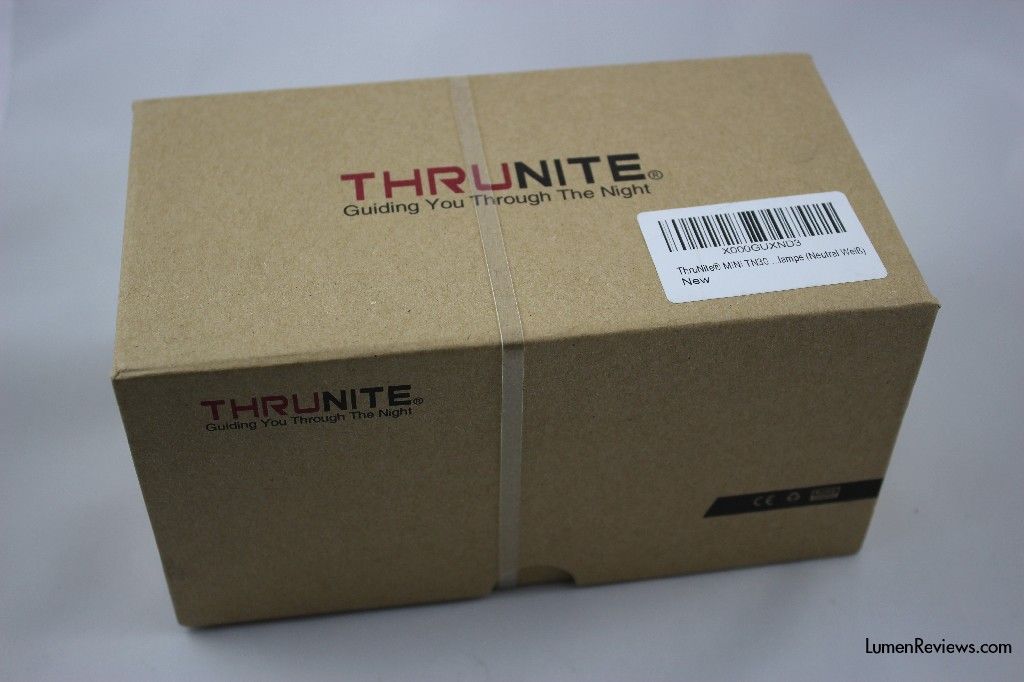
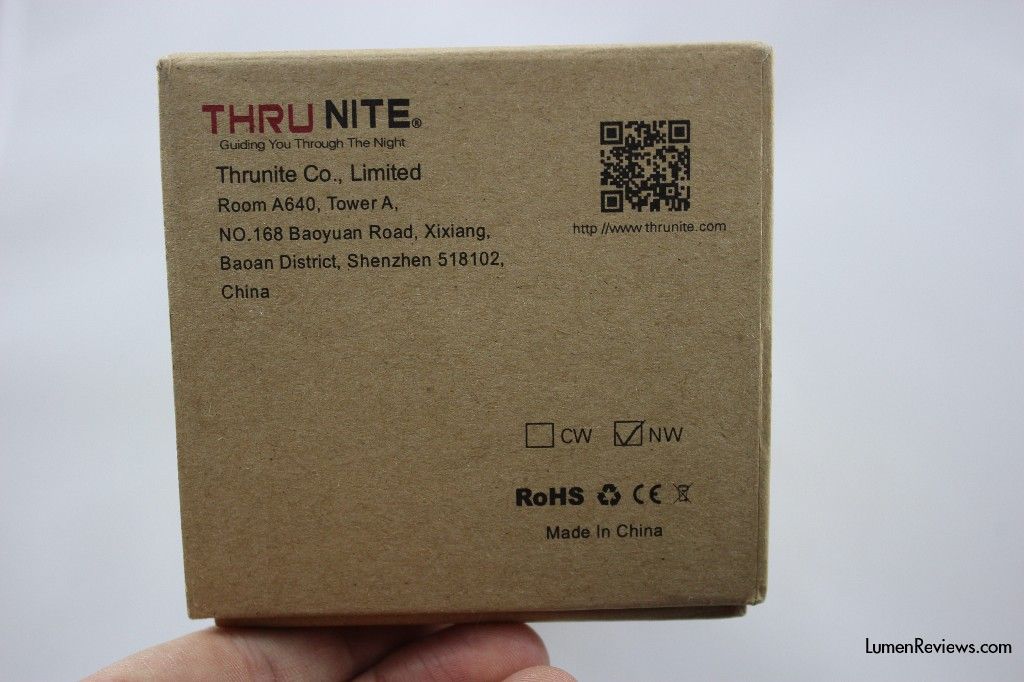
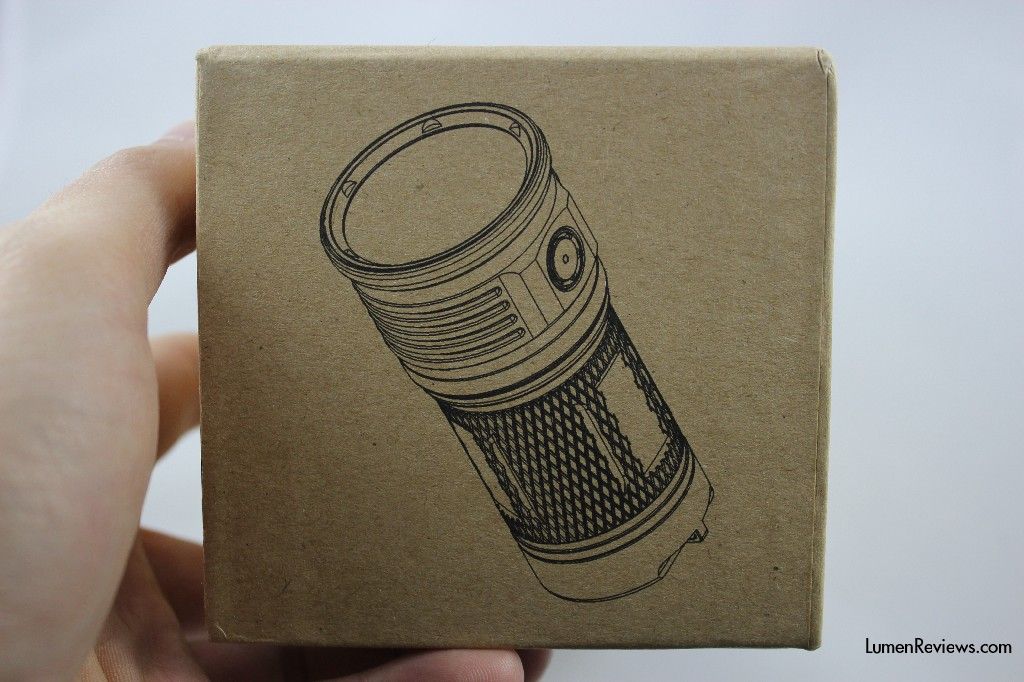
Inside: the light in the sheath, protected with foam, some accessories (lanyard, spare o-rings, spare switch cover), manual in several languages and warranty card.
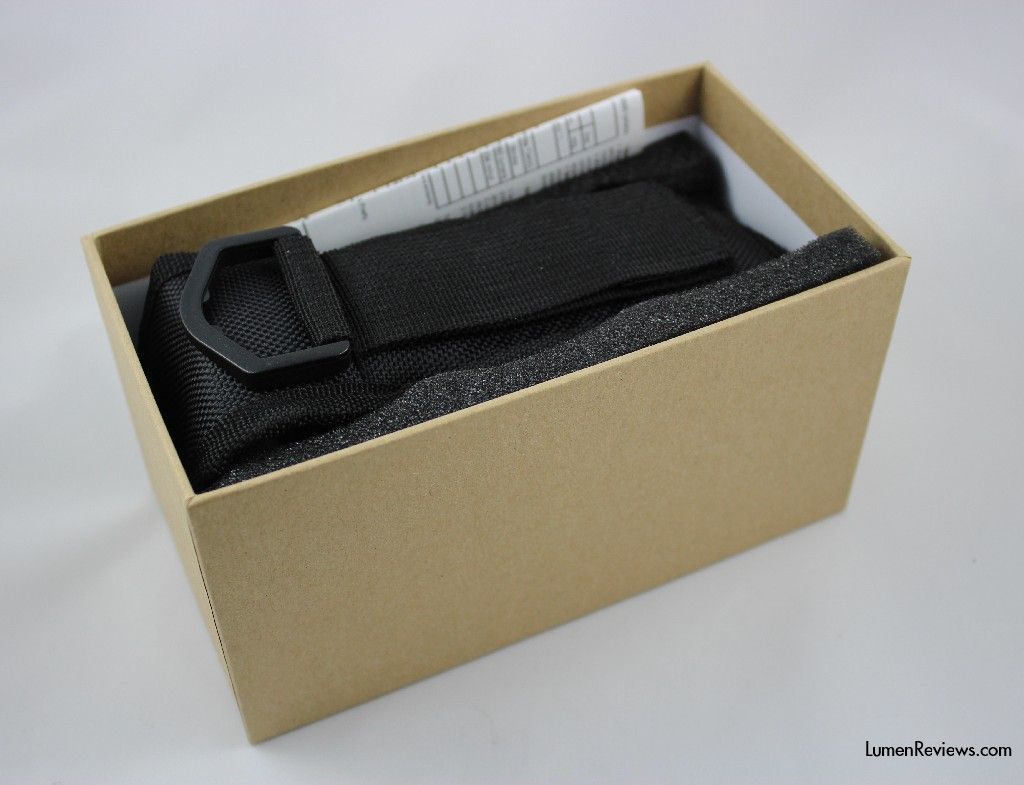
The sheath is made of well padded cordura, with a plastic D-ring, belt loop and MOLLE compatible.
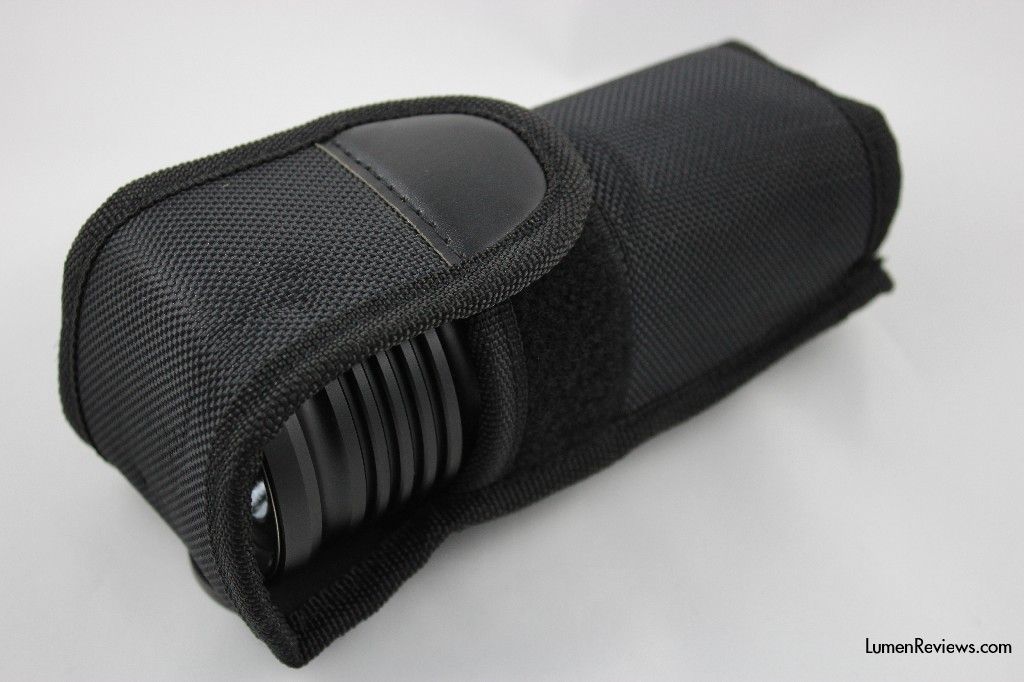
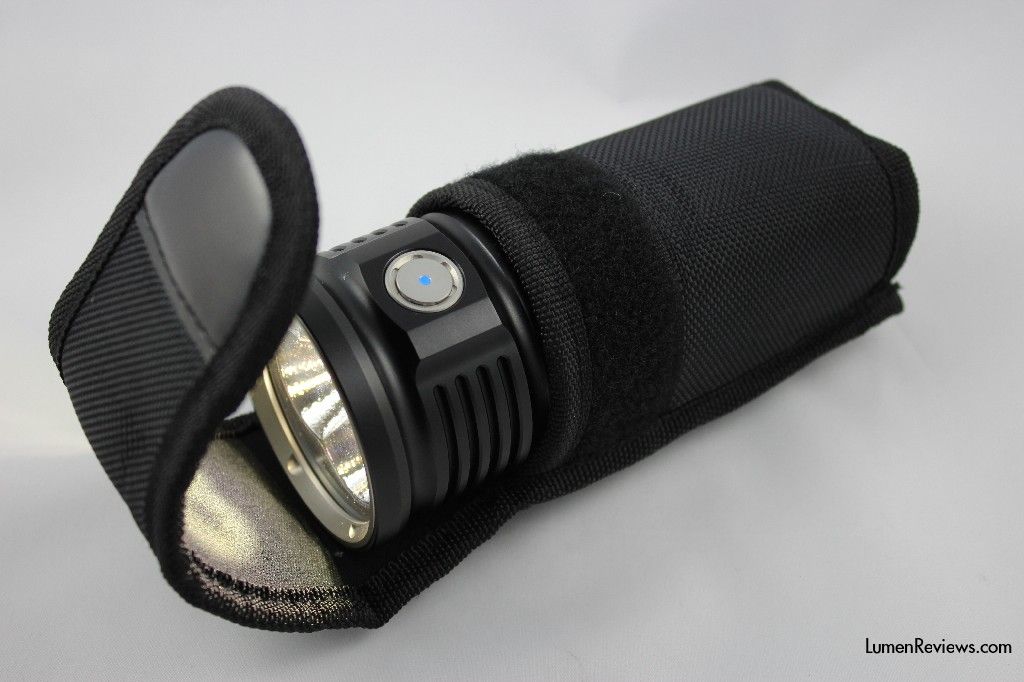
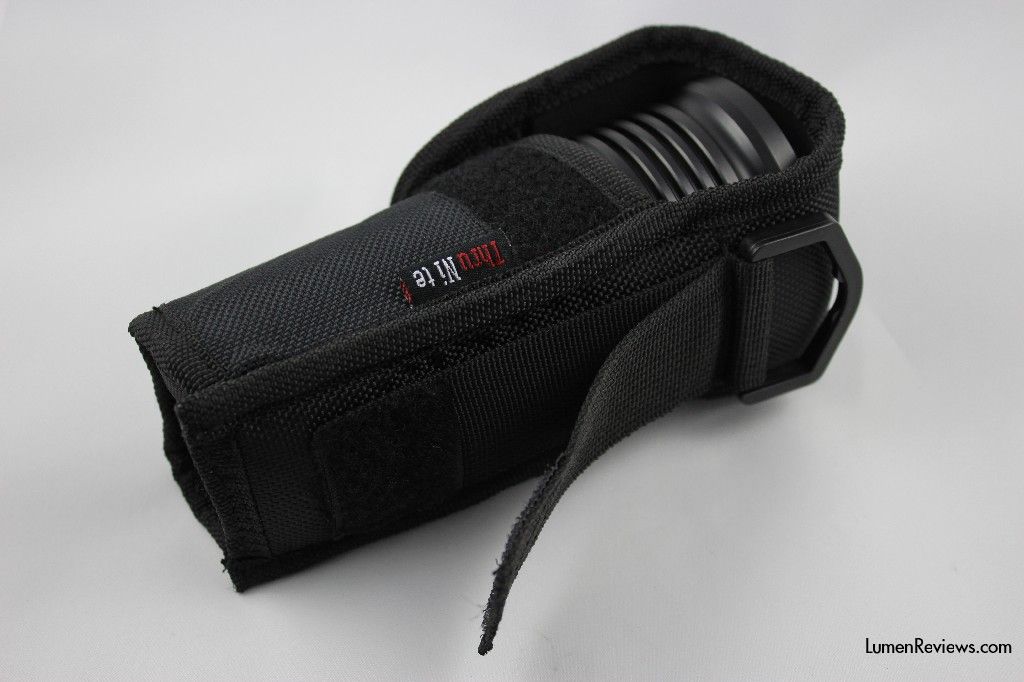
The TN30 Mini 2016 NW
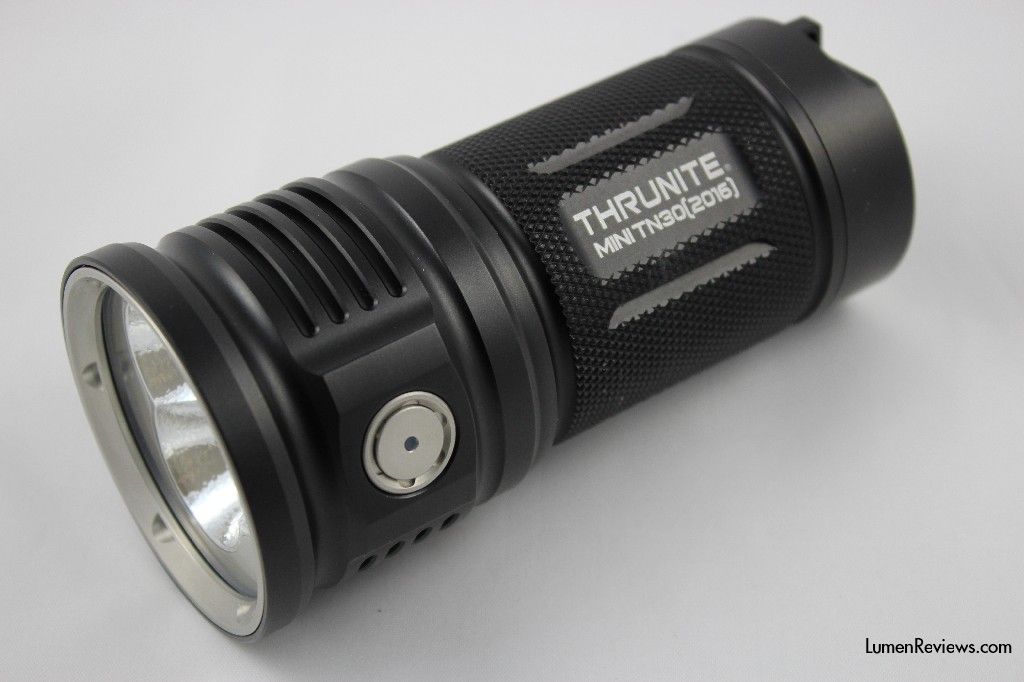
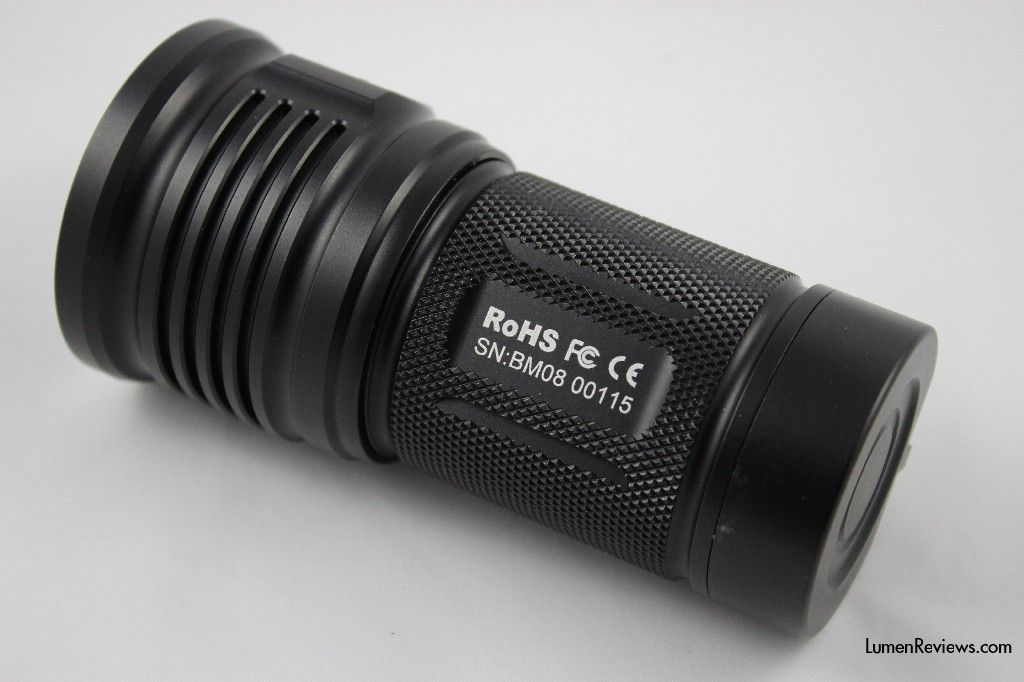


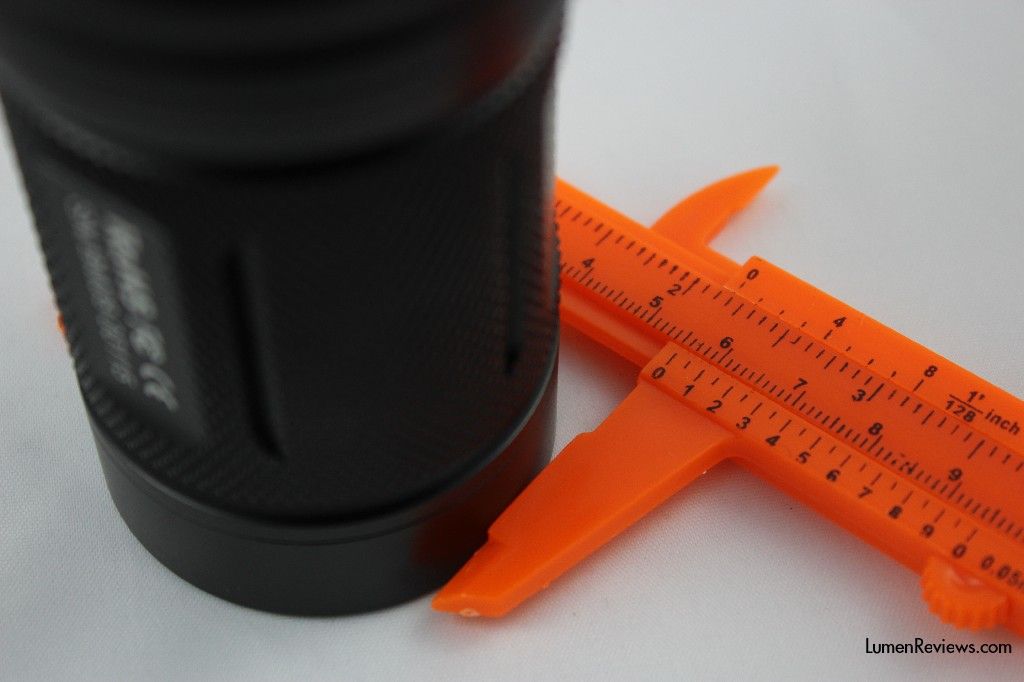
Some size comparisons
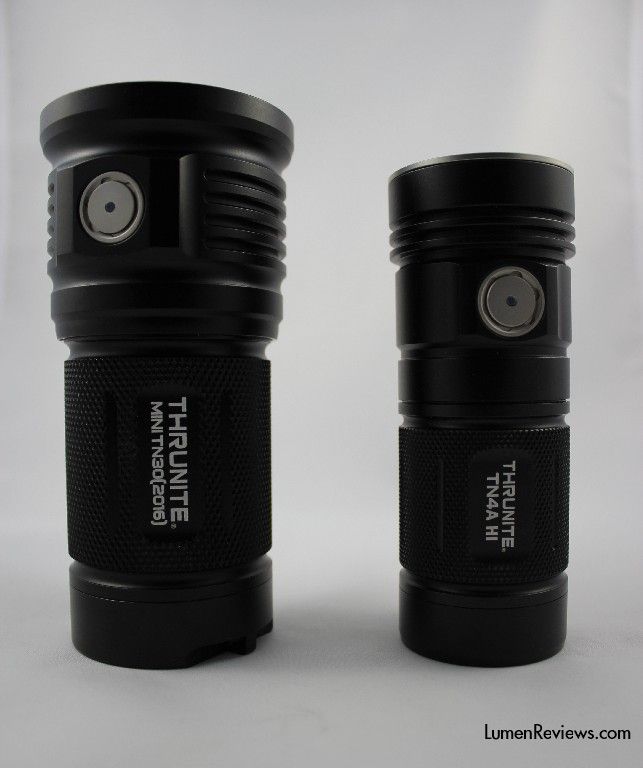
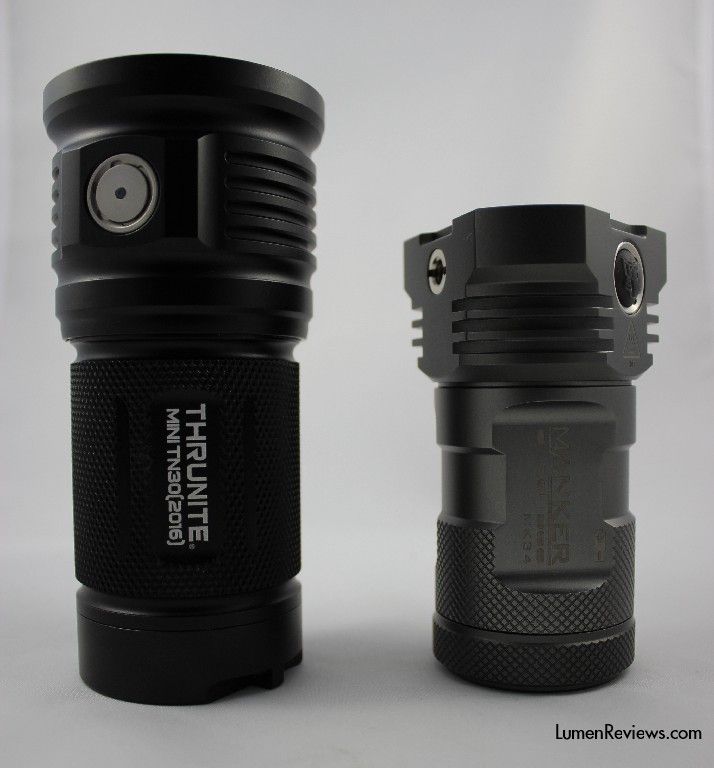
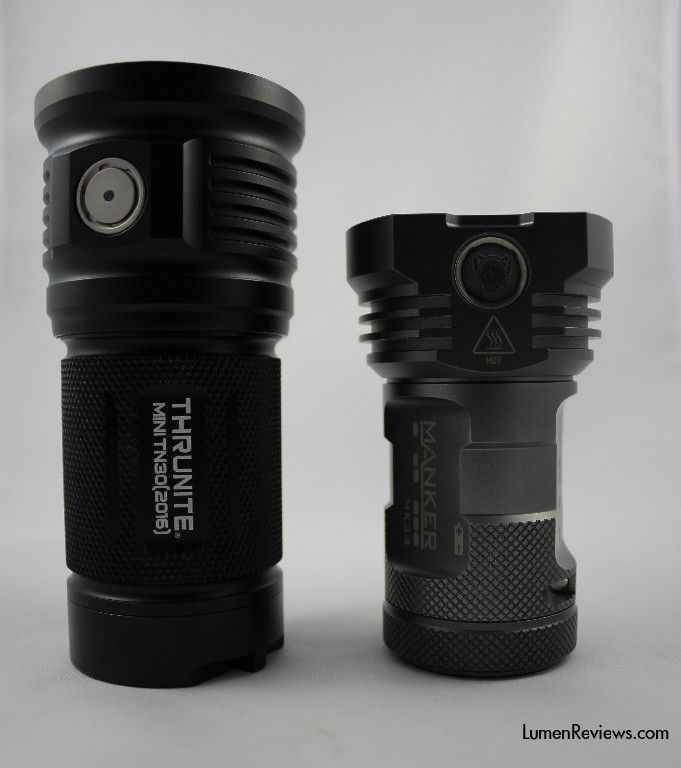
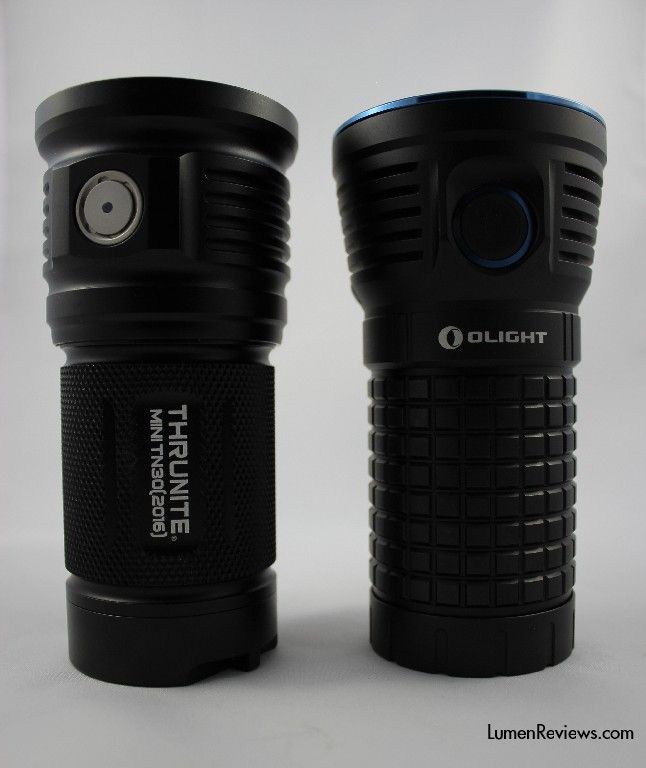
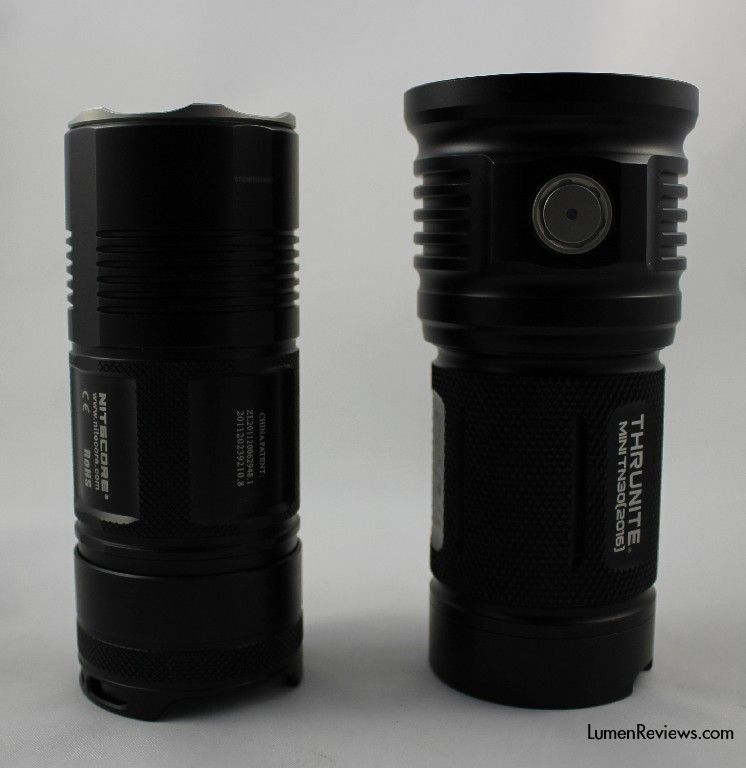
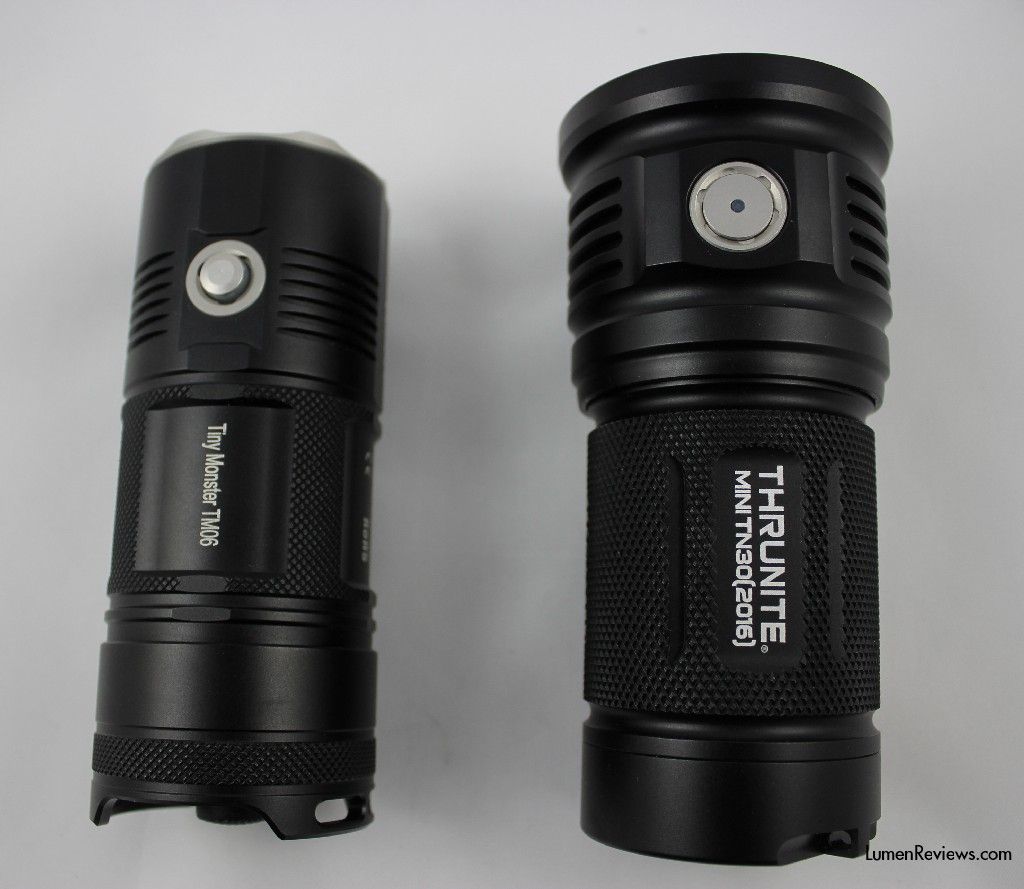
The light features a cylindrical design, with some knurling on the body
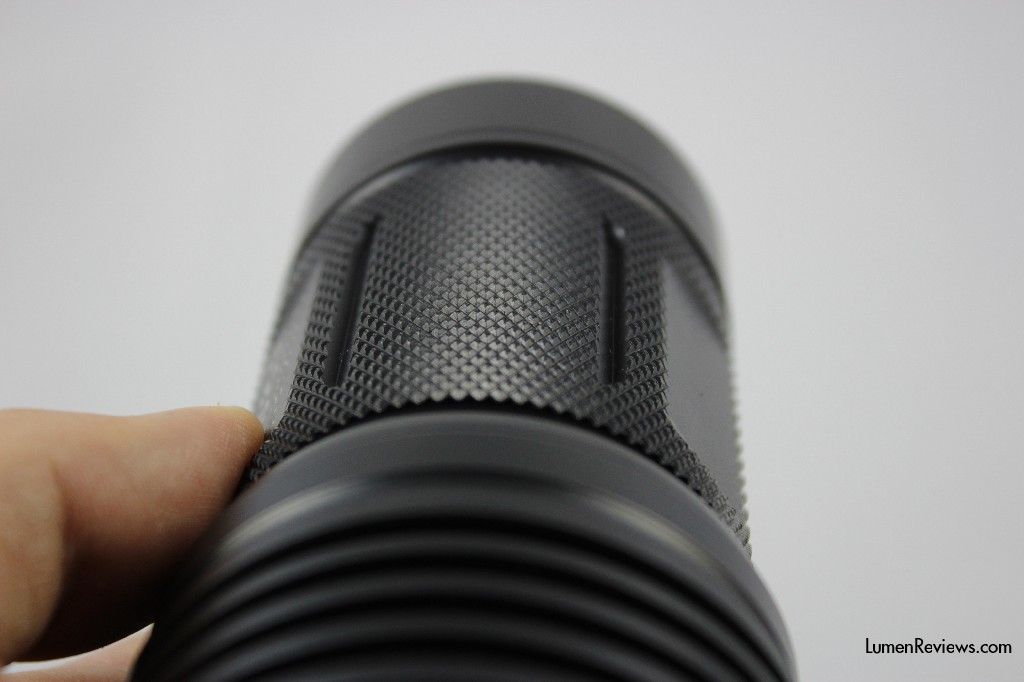
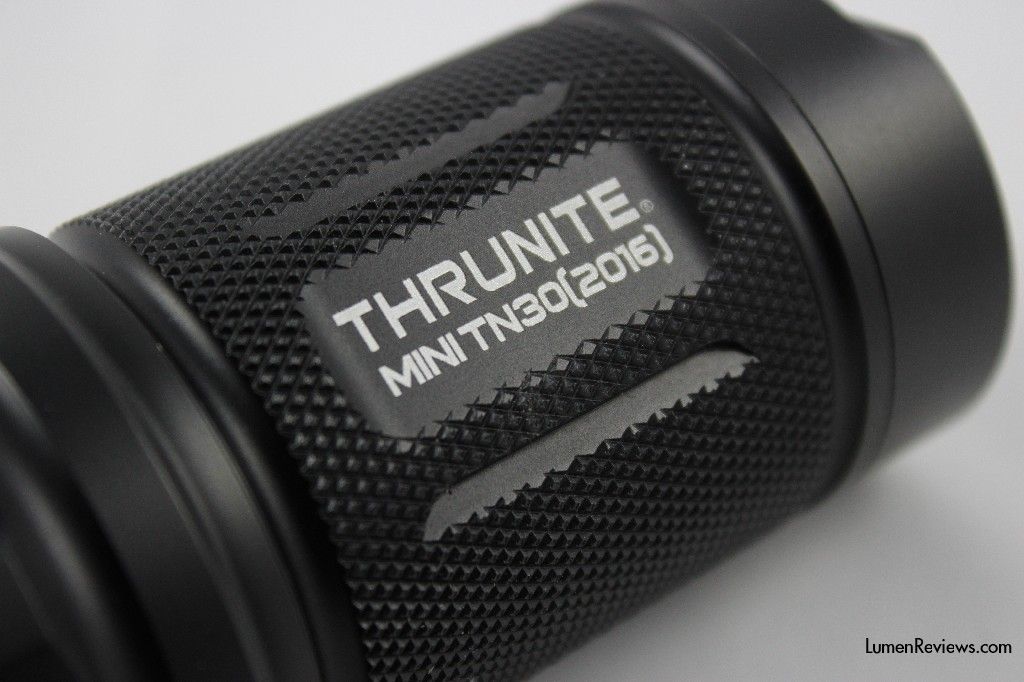
While the head is more smooth, with cooling fins and an electronic switch at the head

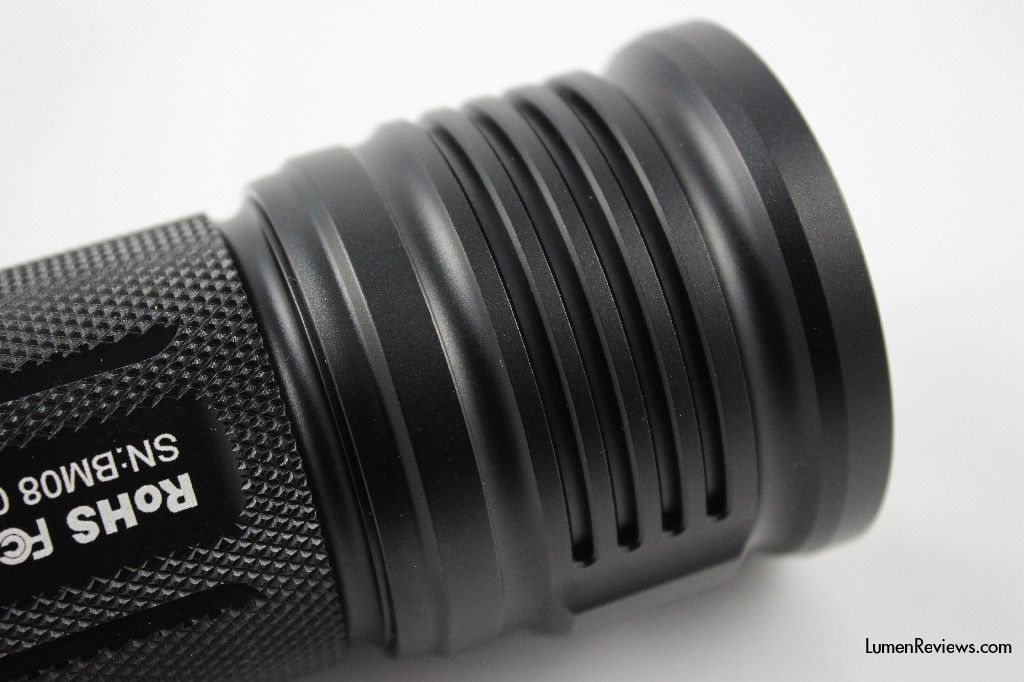
The tailcap is flat, with a lanyard hole
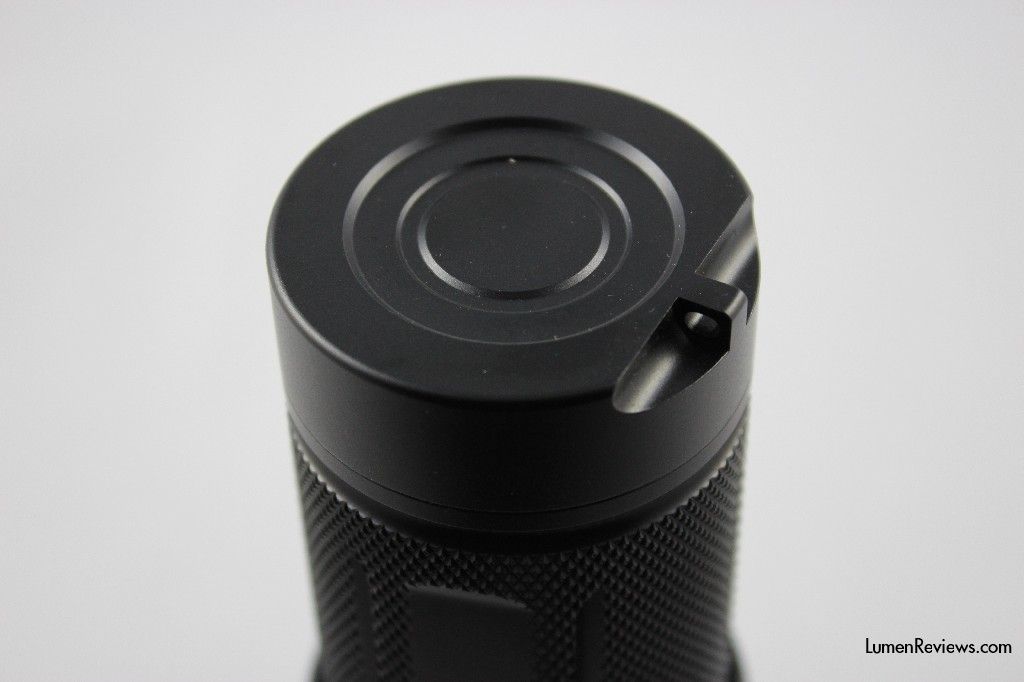
The head hosts 3 perfectly centred XP-L emitters, NW in my sample. The reflectors have an orange peel finish, and are partially fused.
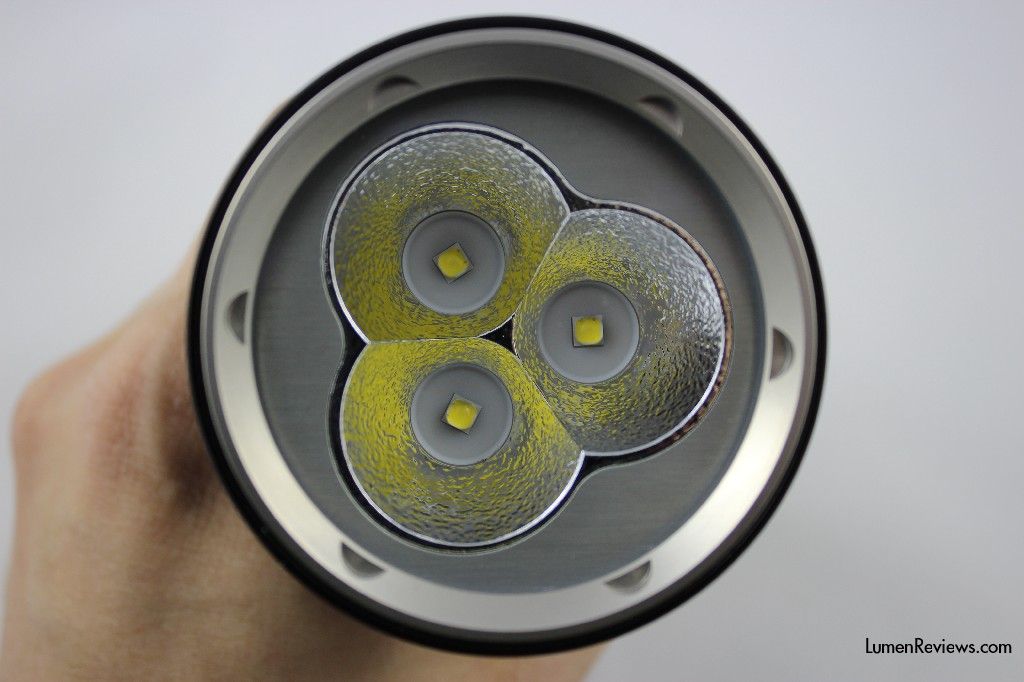
The glass has AR treatment, and is protected by a metal bezel with sand finish.

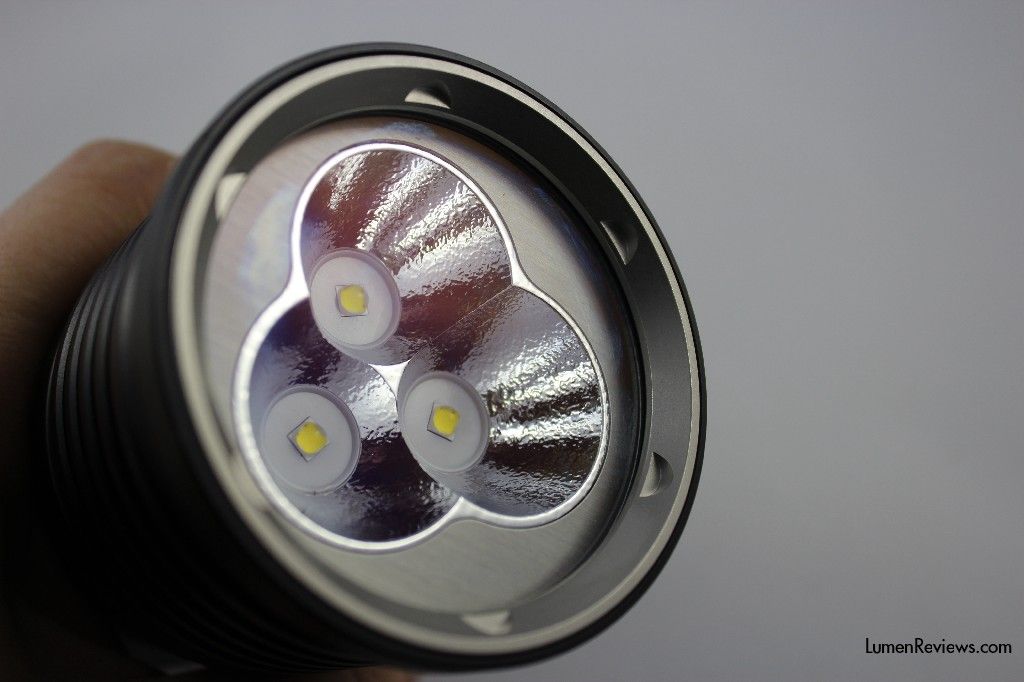
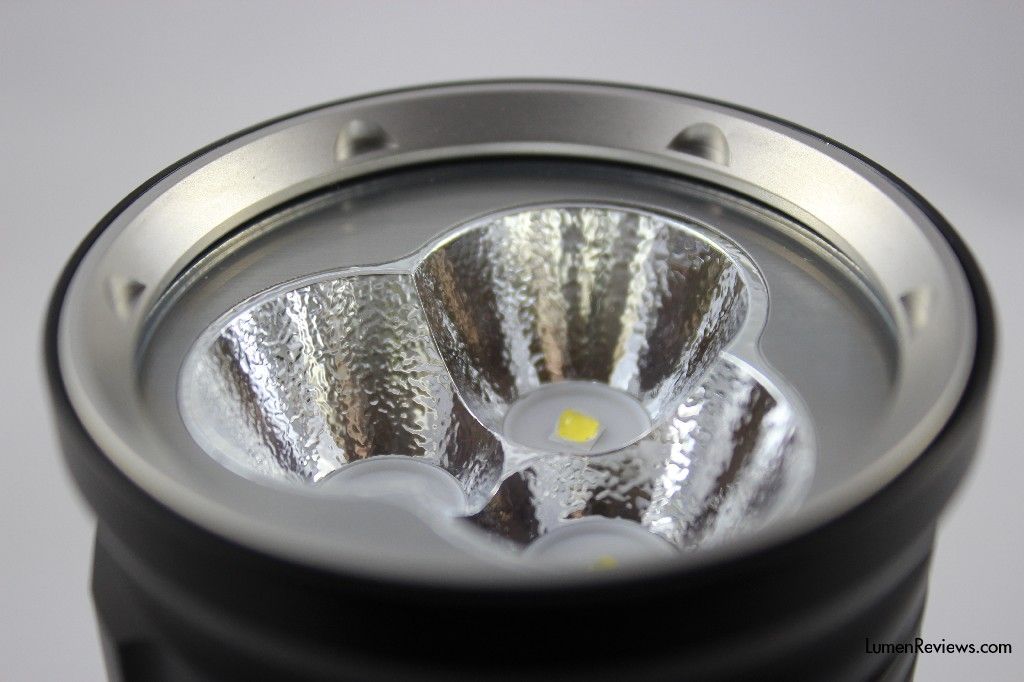
The switch has a metallic cover, and has a LED underneath it. It is possible to replace the metal switch cover with the spare one, which is made of clear rubber and will offer a different grip but less resistance. The switch offers medium resistance.
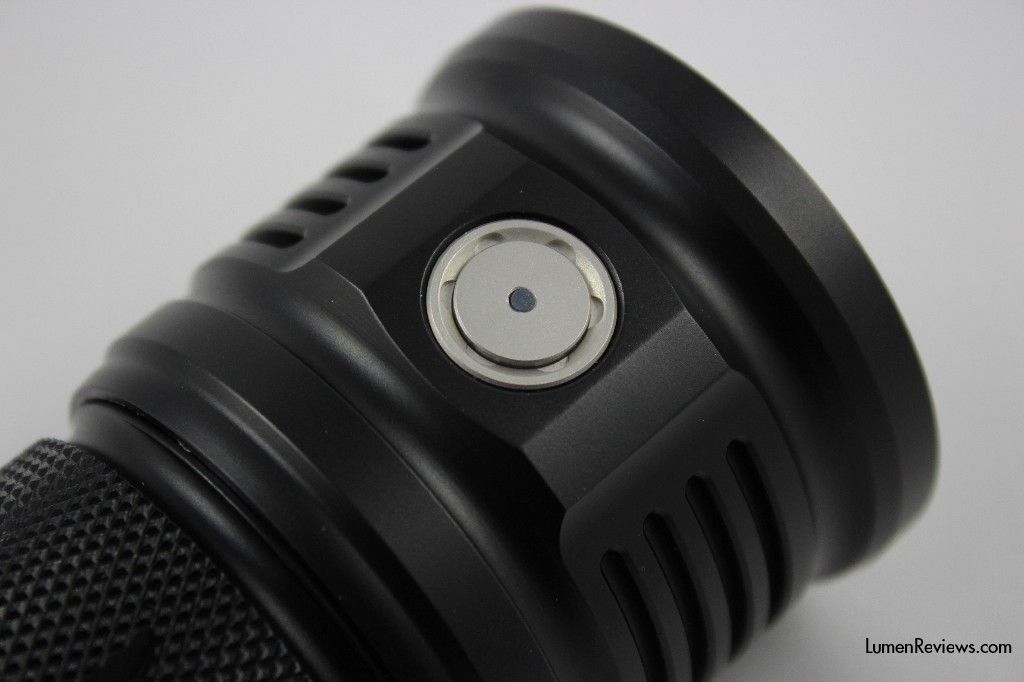
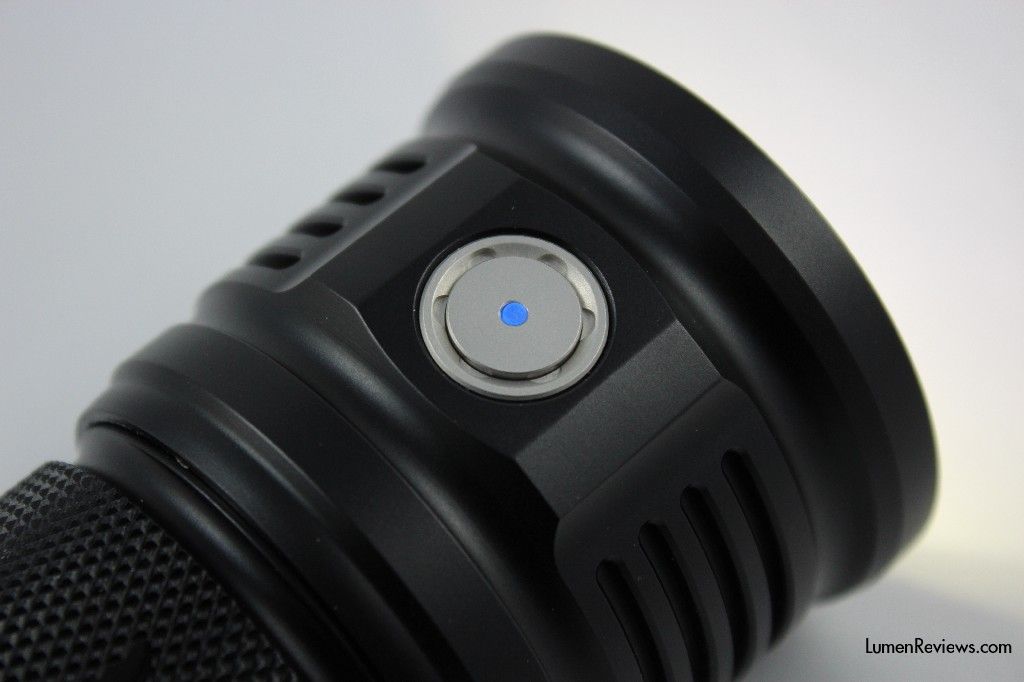
The TN30 Mini is composed by 2 parts, body and head.
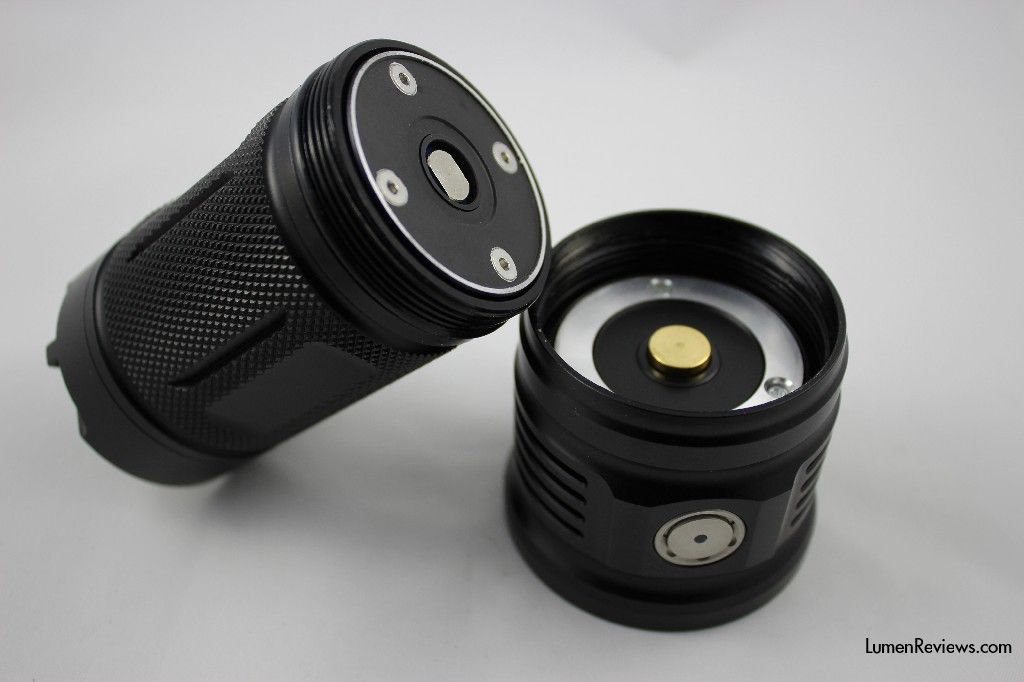
Inside the body, there’s the battery carrier
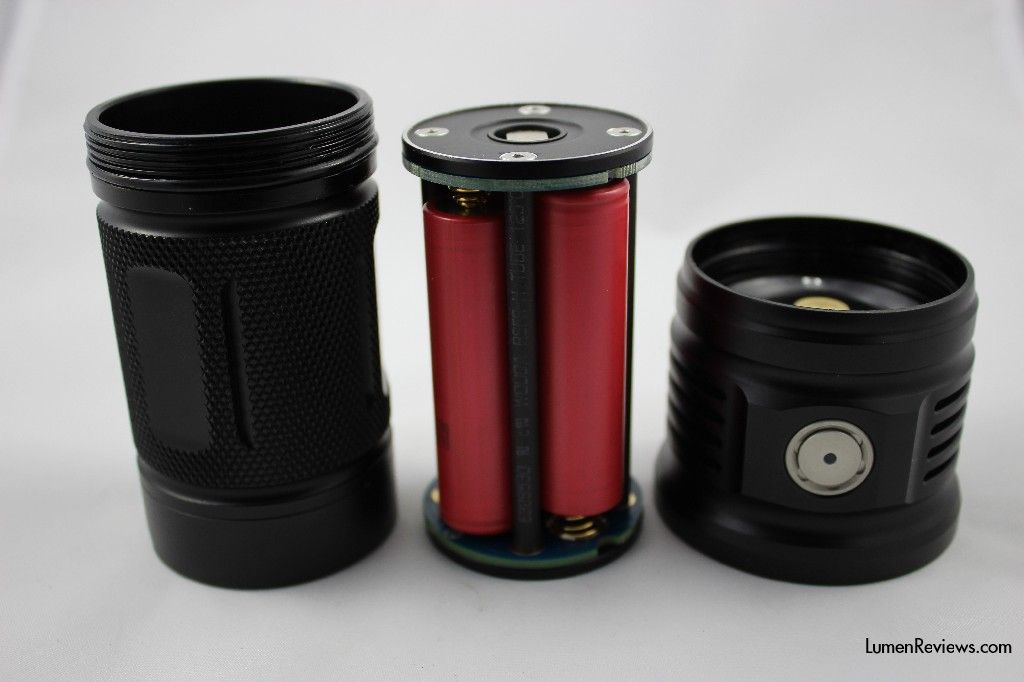
The battery carrier has both poles at both sides, so it can be inserted in both direction
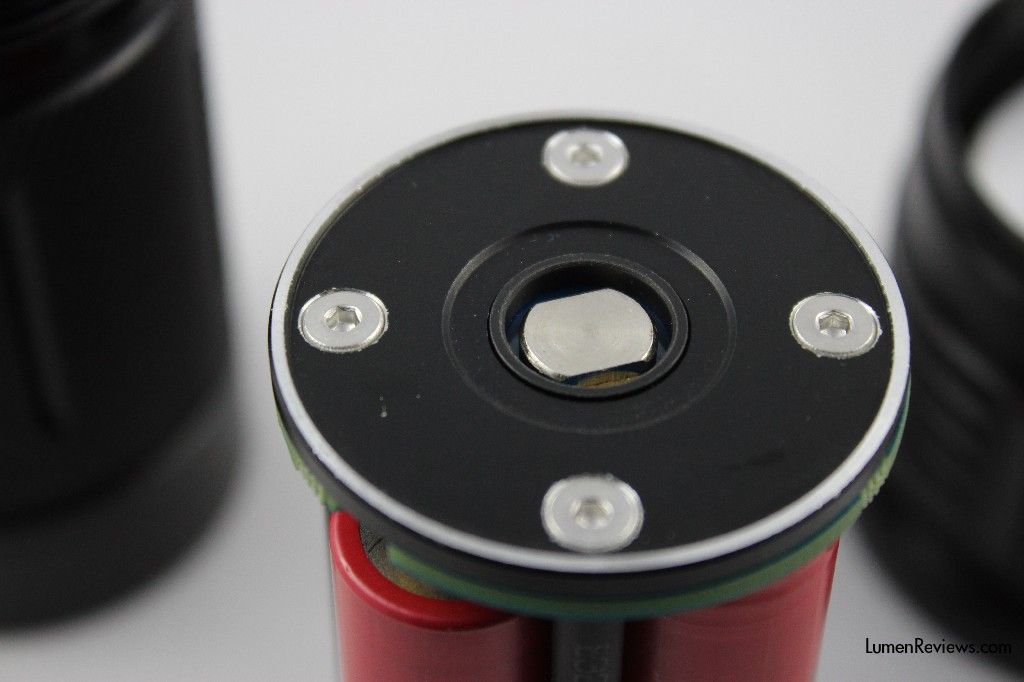
The positive pole is recessed, so it will not short the batteries if it lays on a flat conductive surface

The contact points in the battery carrier are golden; the positive contact points are raised, so it is possible to use flat or button top 18650 cells because.
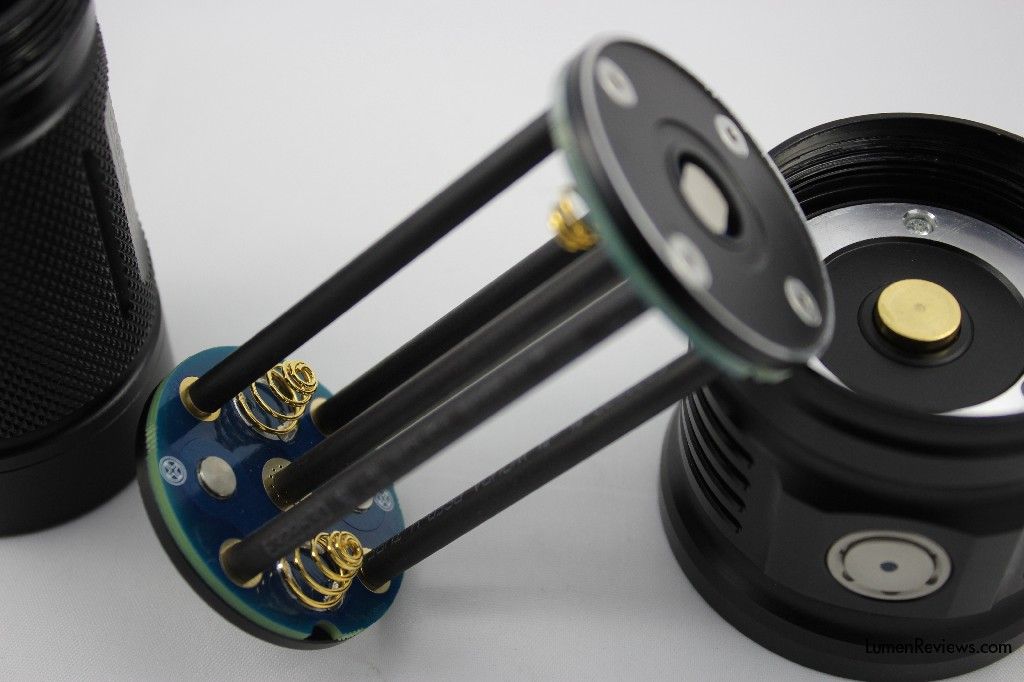
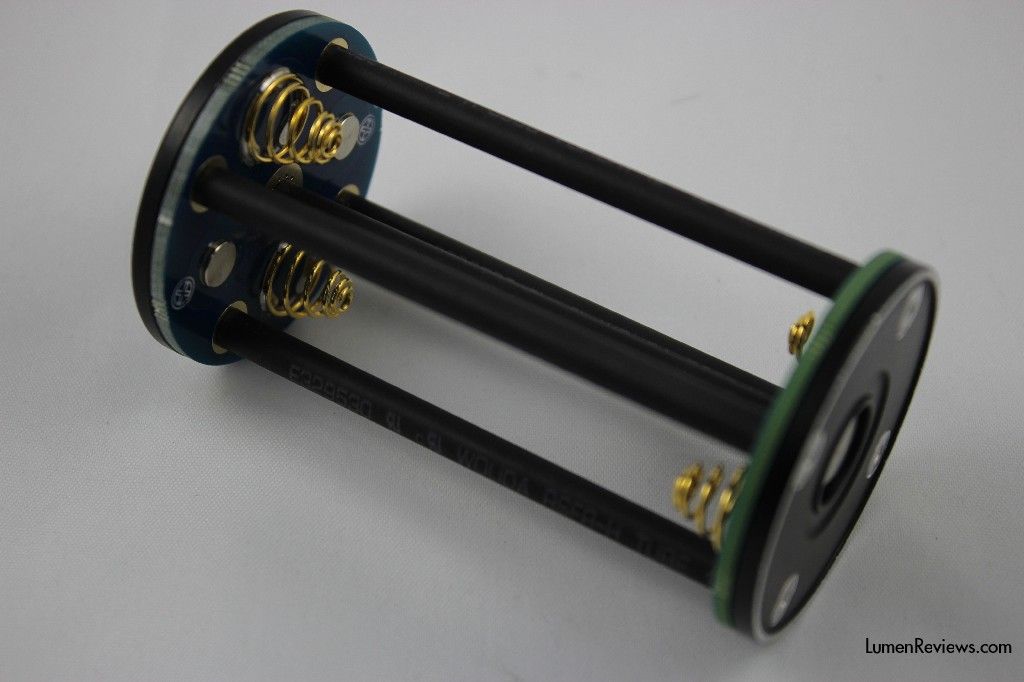
User interface
Press the electronic switch to turn the light on and off.
When the light is on, keep pressed to cycle between low, medium and high mode. Wherever mode you were into, the light will always start from low when changing modes.
A double click, with the light either on or off, will activate turbo.
When the light is off, a long press will turn the light on at firefly mode.
The light has memory for low, medium and high mode.
A triple click will activate strobe.
When the light is running, the blue led under the switch will turn on. When the batteries are running low, it will turn red.
Beamshots
For these shots I have to move back the camera to fully get the spill in the pics
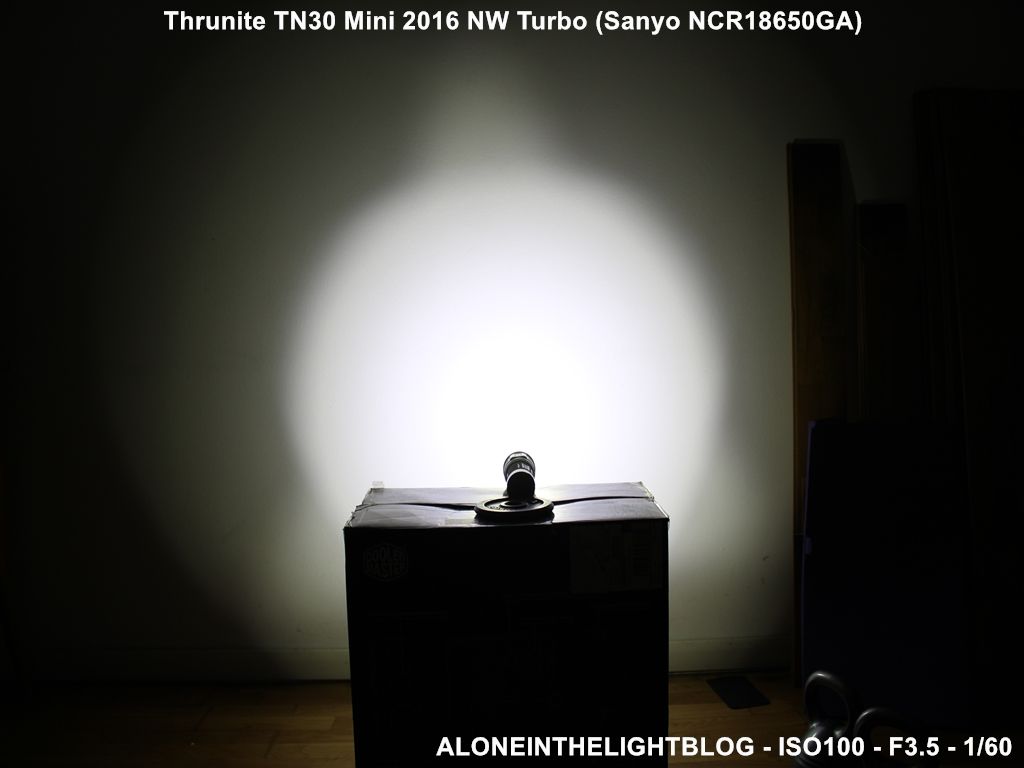
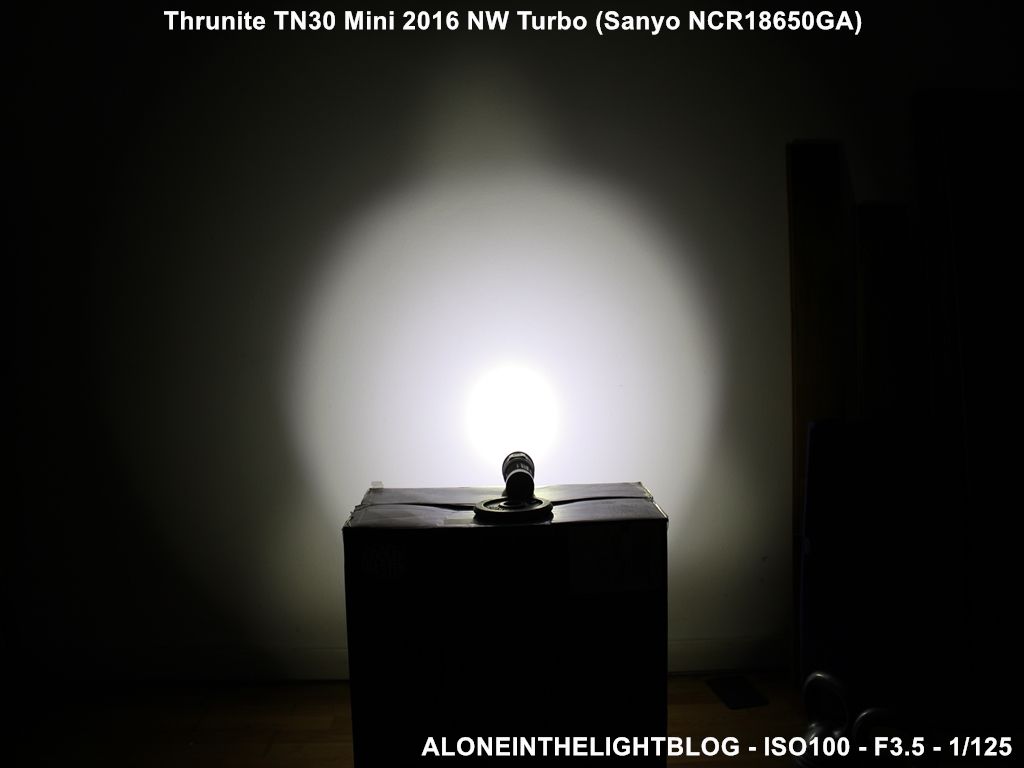
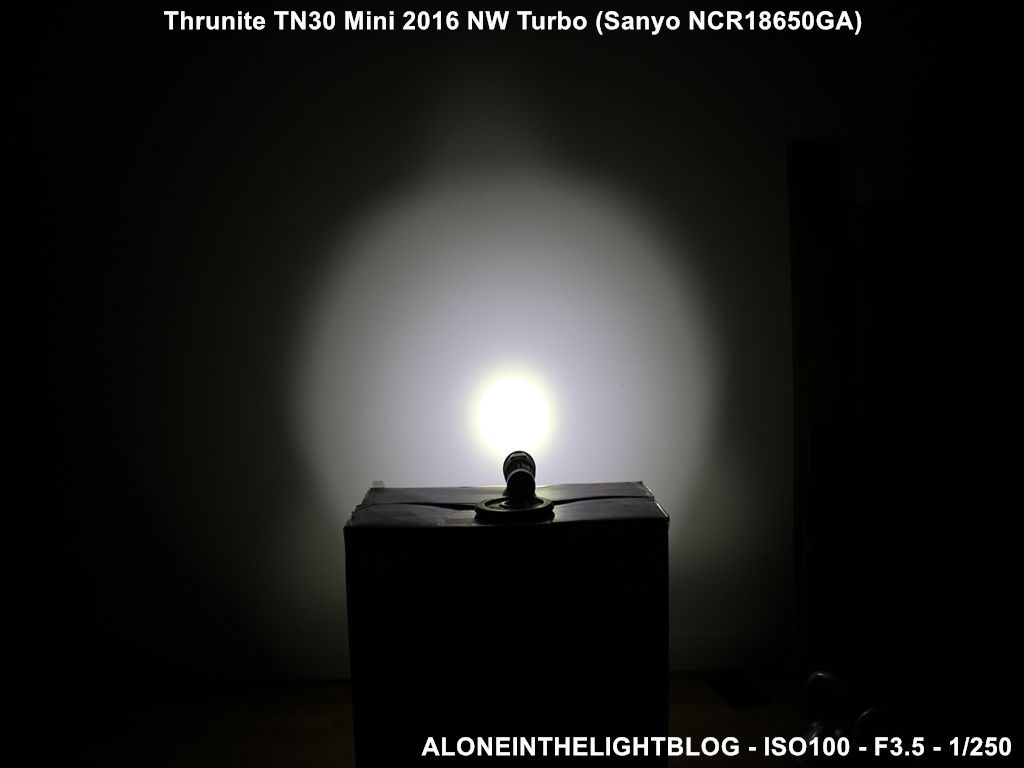
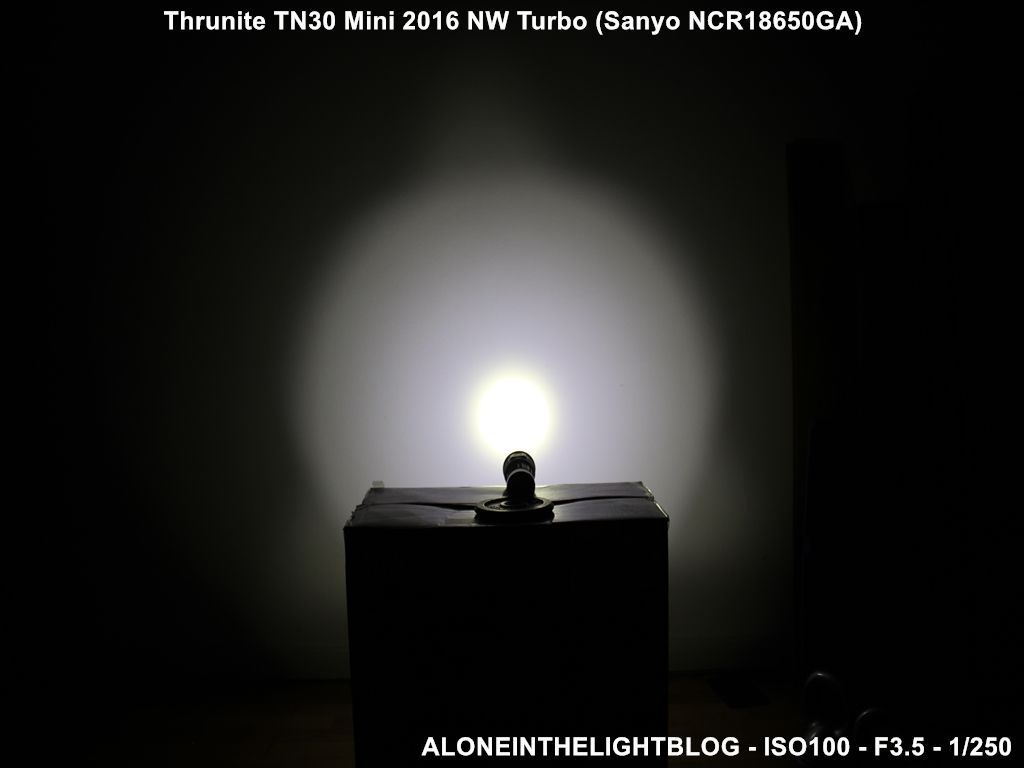
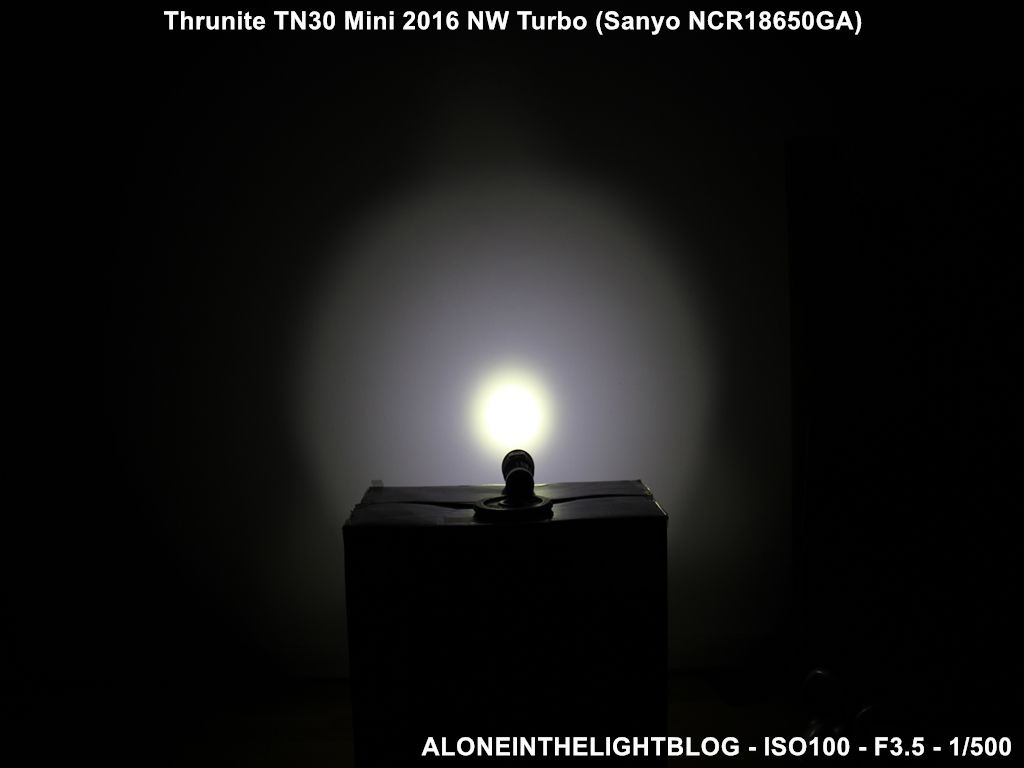

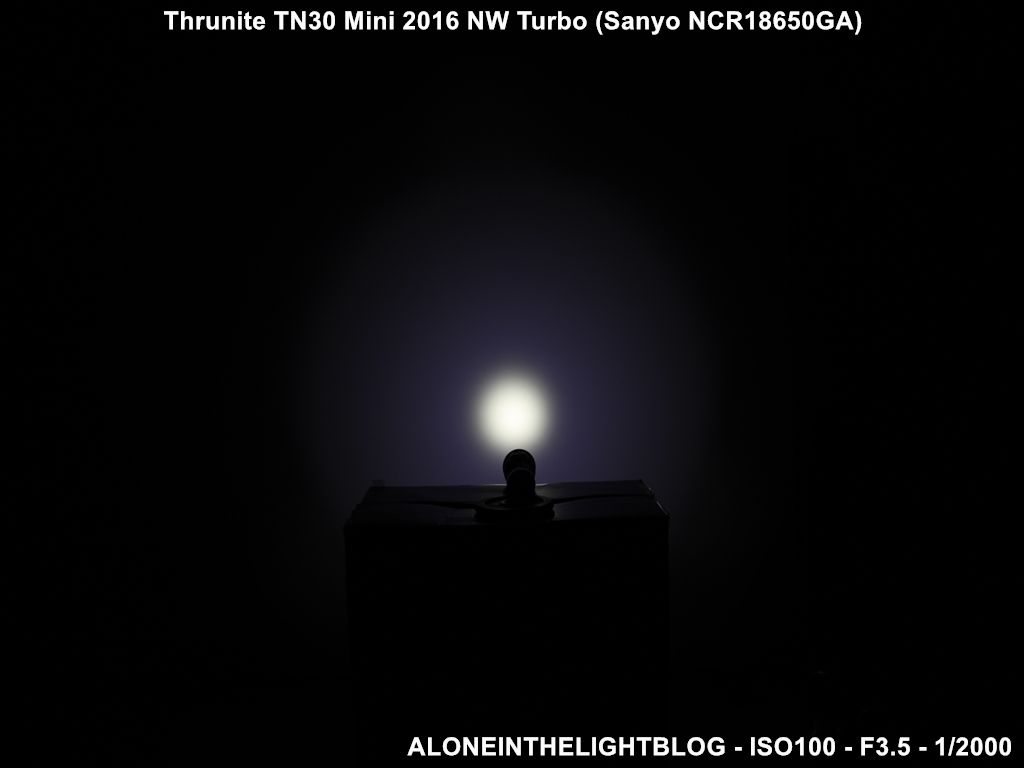
The tree is at 100 meters.
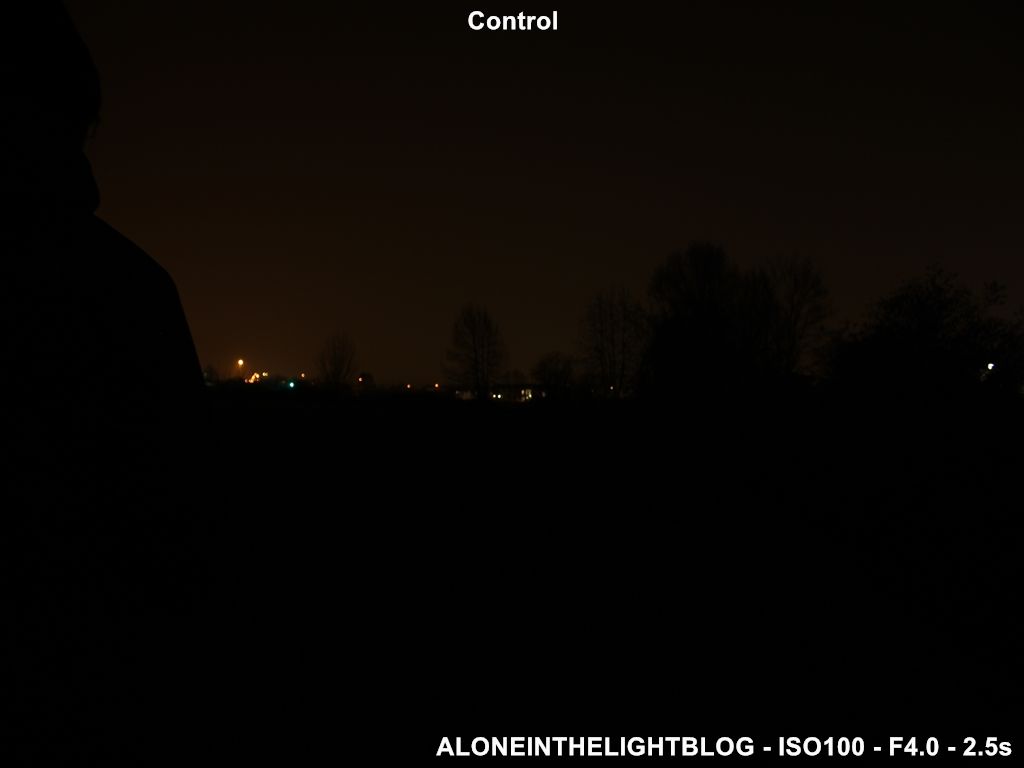
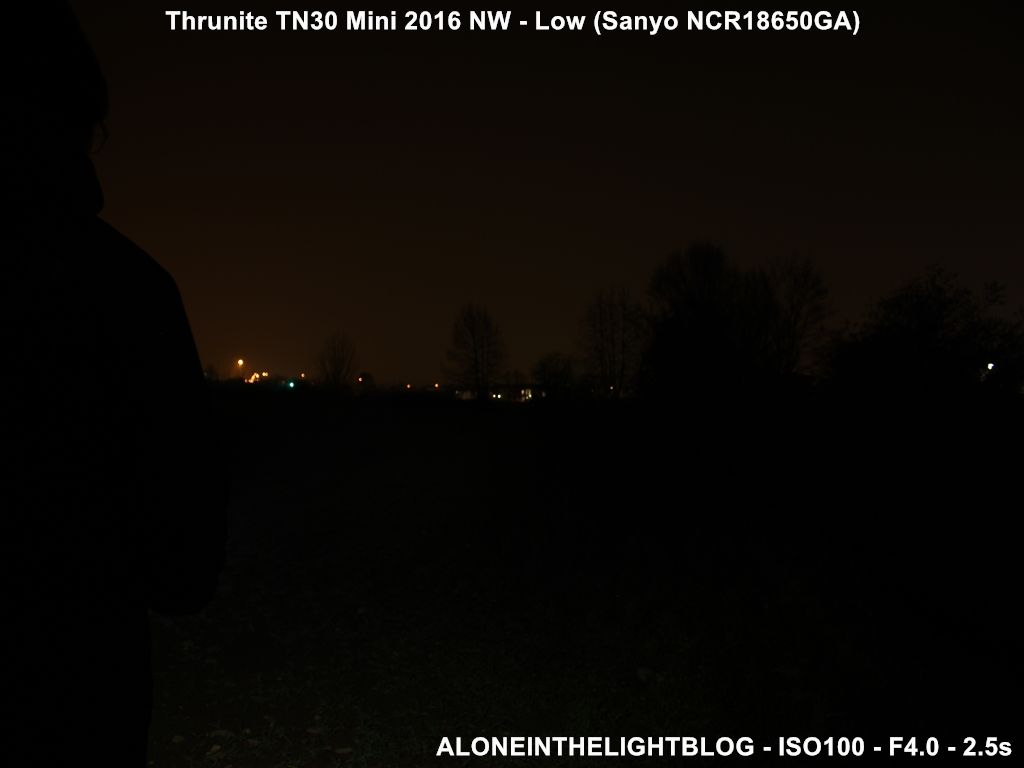
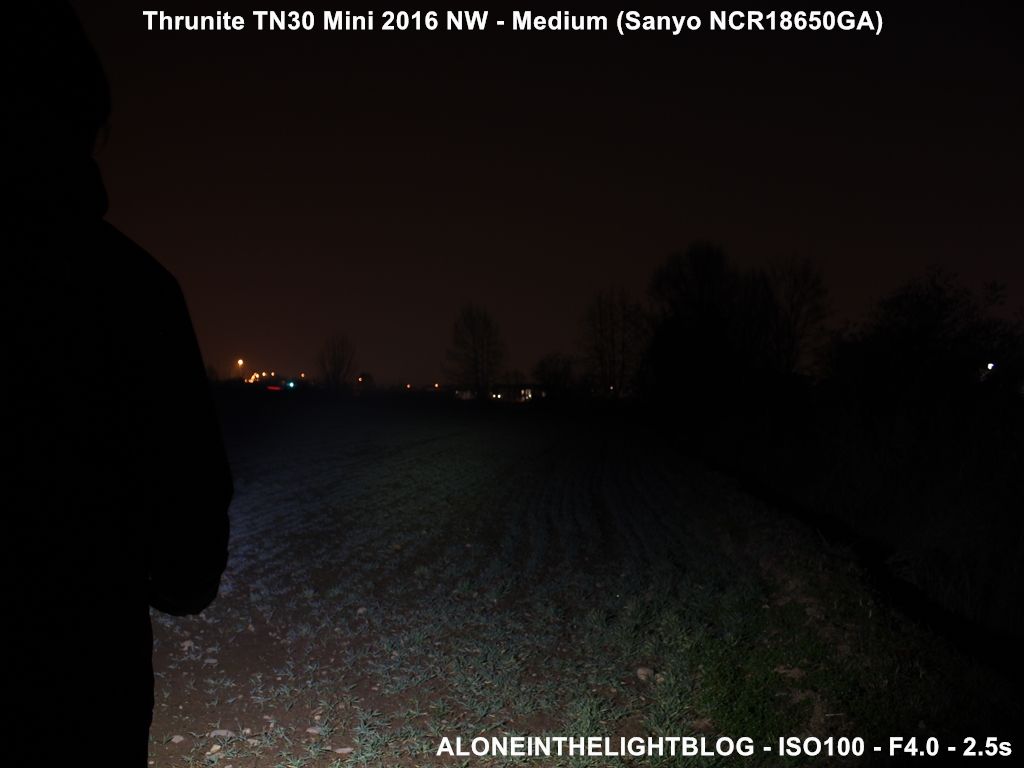
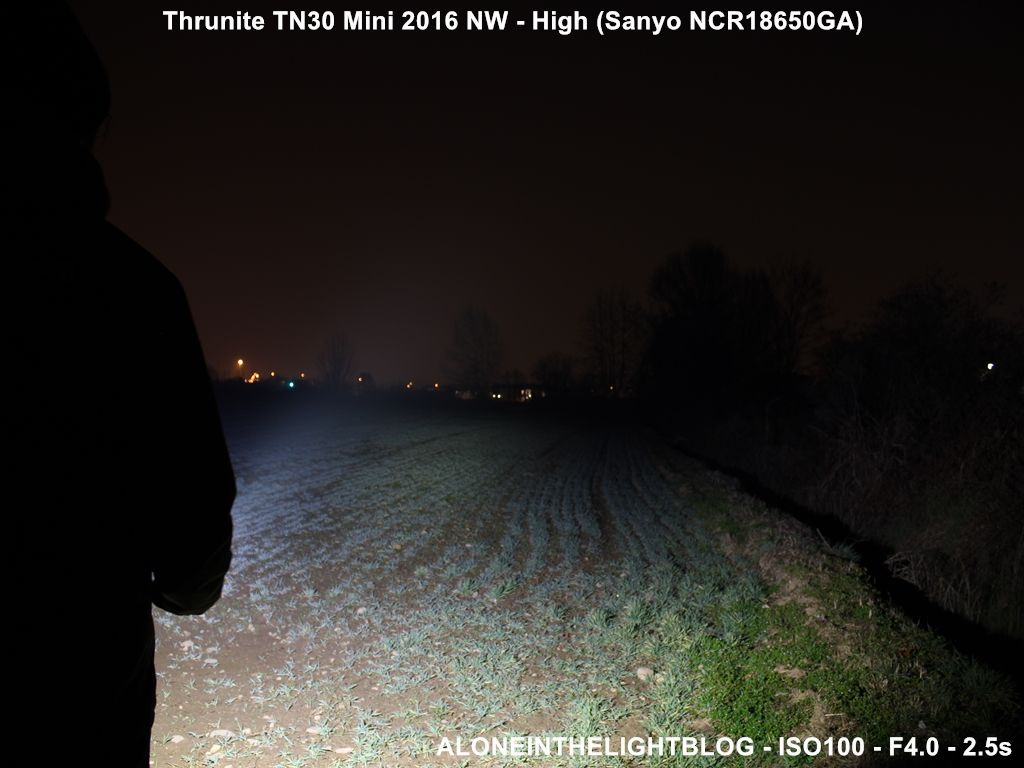
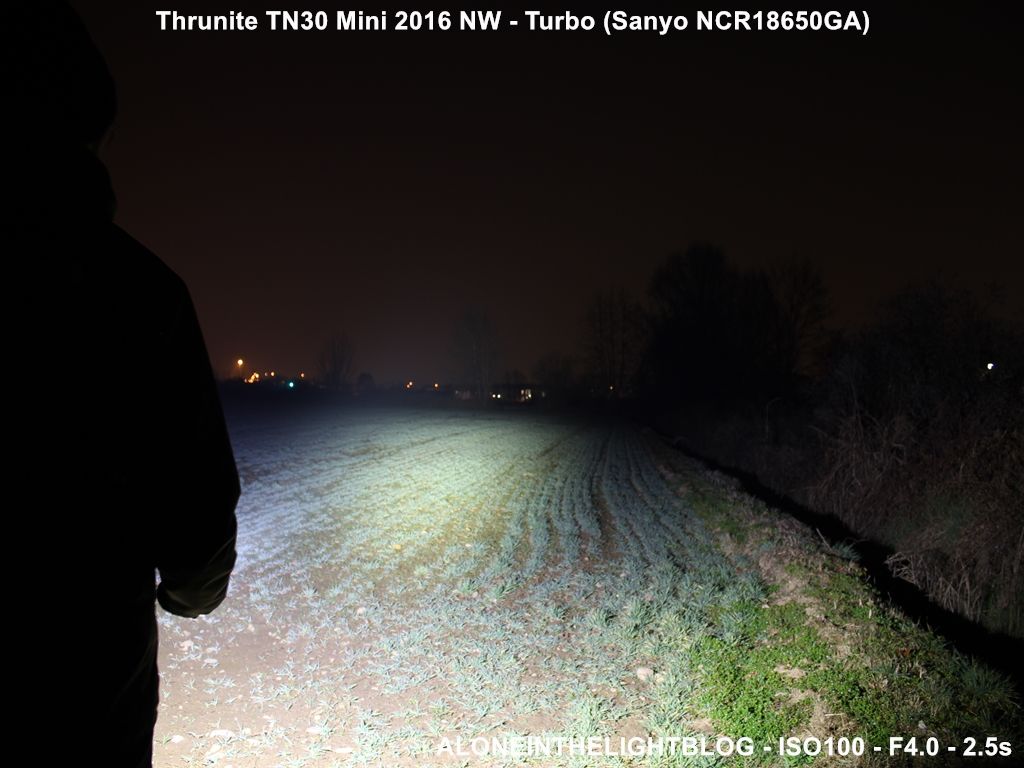
Open field.
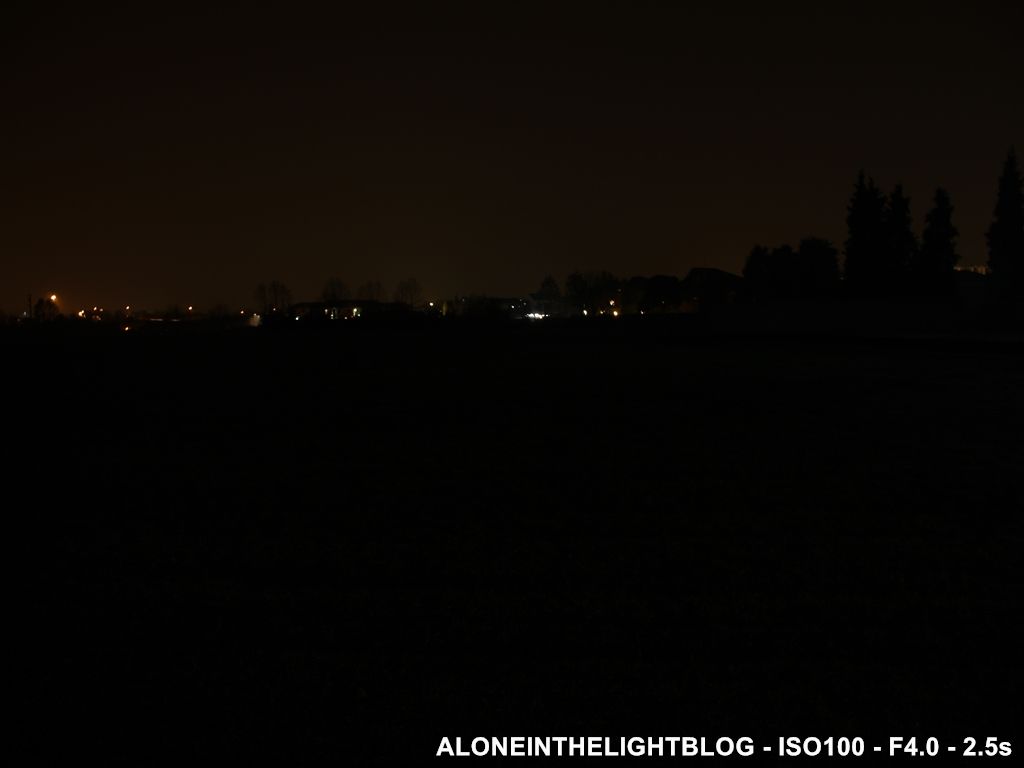
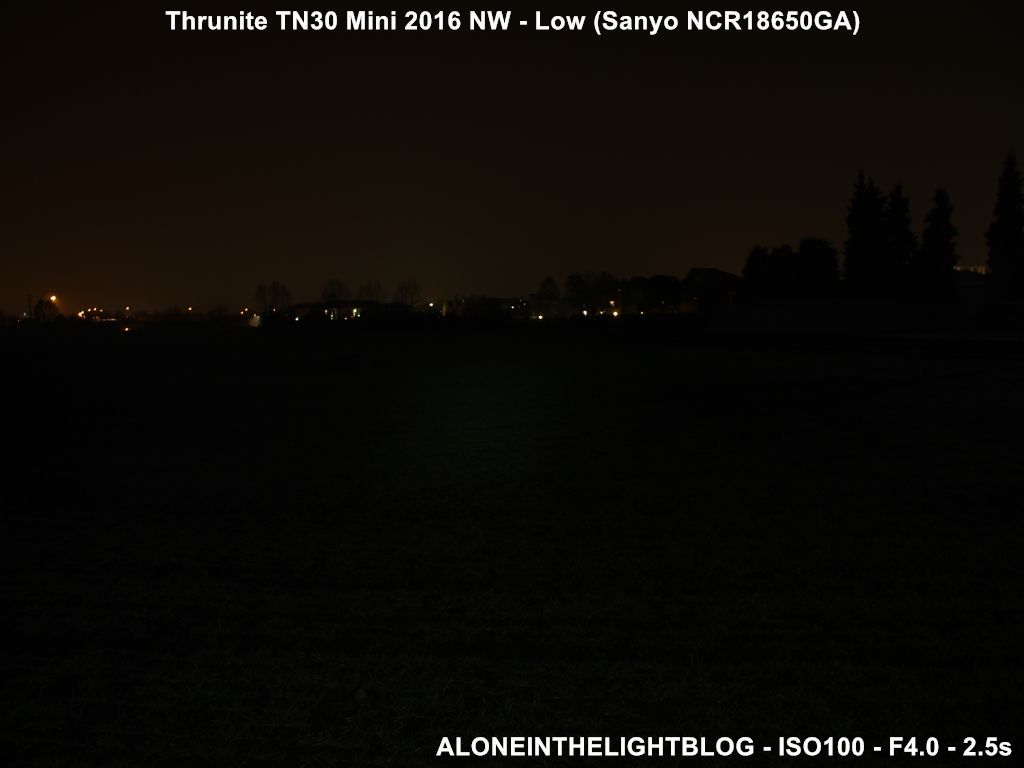
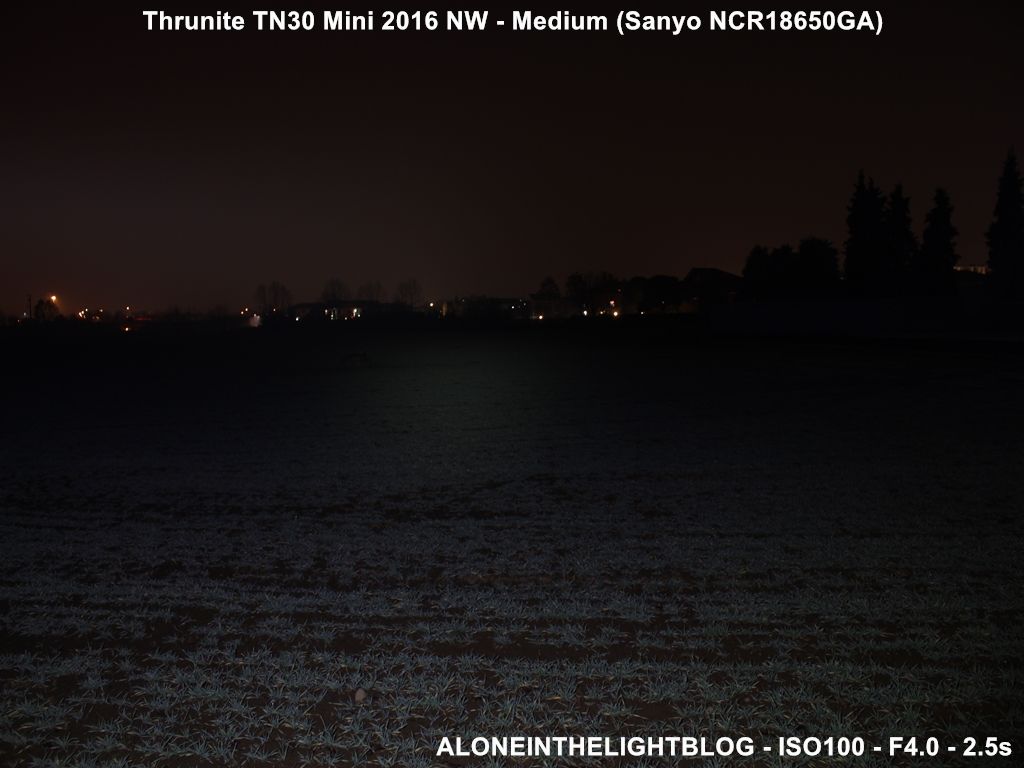

The difference between the 2 shots at turbo consists in the aiming point of the light. Horizontal, the first, and slightly pointed to the ground in the second.
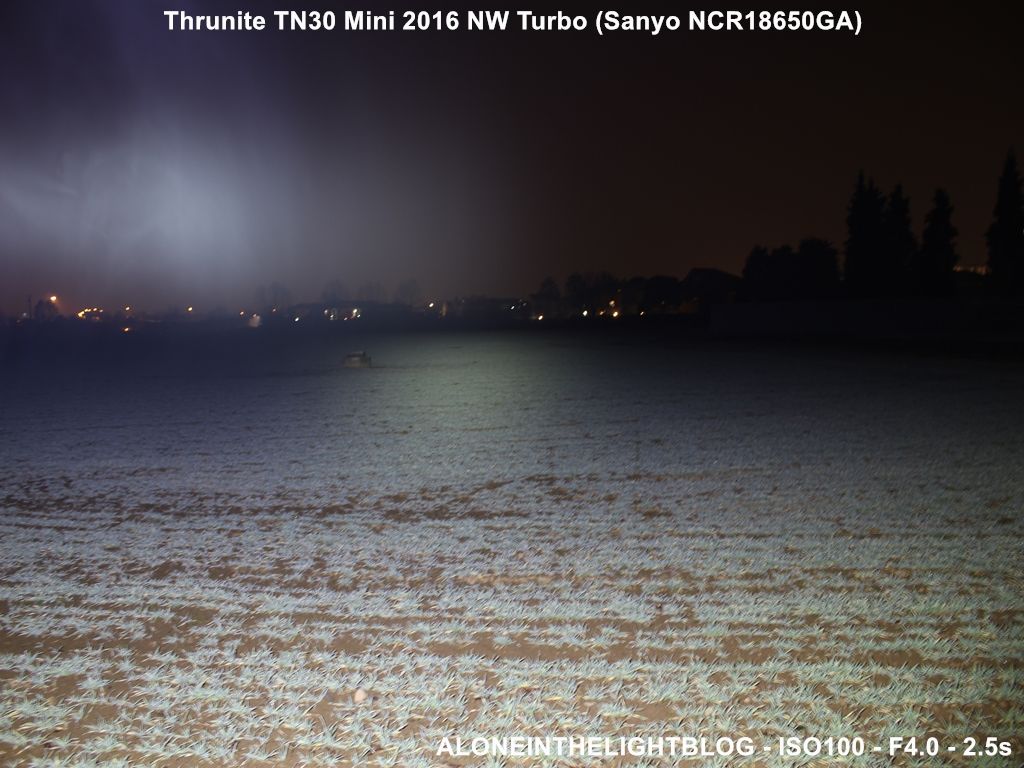

The useful throw is around 100 meters, the spot is somewhat present even at medium distances, as you can see in the last pics.
The spill is extremely wide, homogeneous (in real use there’s nothing like the “triangle” that it is visible in the wall shots) and bright. A very good beam for a flood light.
On my sample the tint is a nice neutral.
Output and runtime
Both tested with Sanyo NCR18650GA.
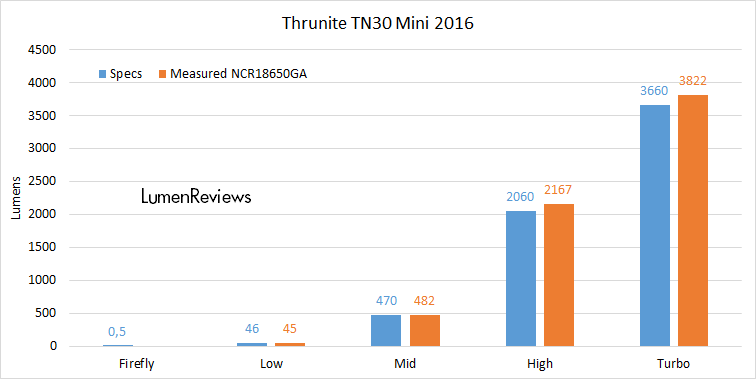
Considering that the declared output is relative to the CW version, Thrunite underestimates the output according to my measurements.
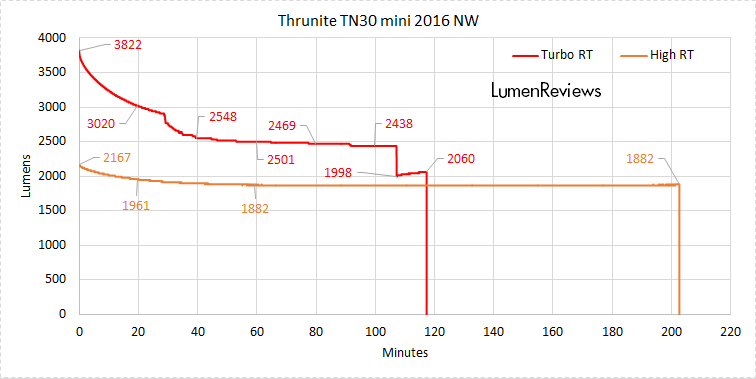
A magnification of the initial part of the turbo curve. The decrease in the brightness is very gradual, and at 38’ it has still 75% of the initial brightness.
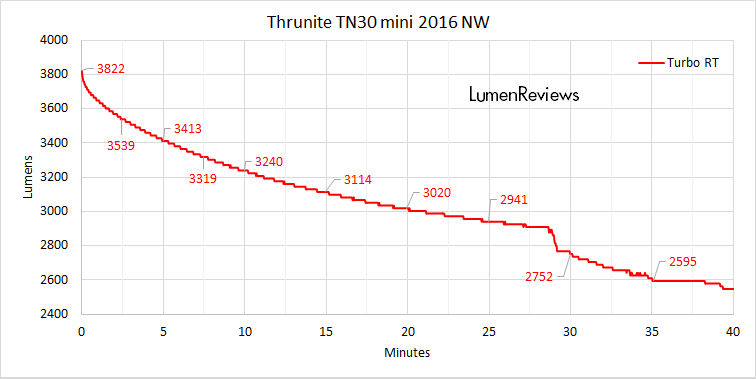
Before anyone starts wondering, the small steps you see in the plot are not an interpolation of the values.
In this plot, every value has a different colour.

Thrunite claims that the TN30 Mini has a built in system that decreased the brightness in function of the temperature. I have tested this feature at turbo mode, cooling the light with a big fan close to it.

With the cooling in action, the light practically maintains the same output for about 70’.
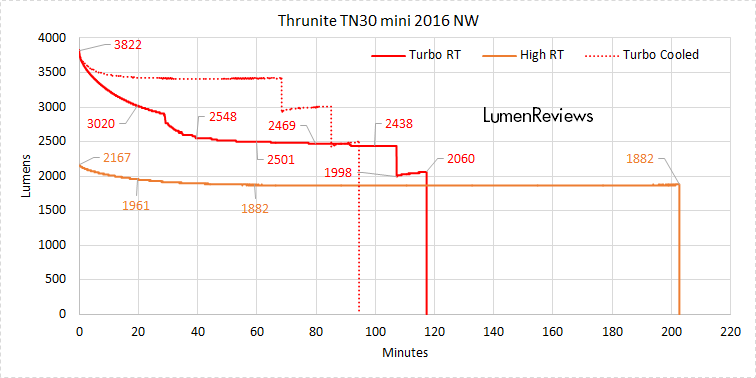
My thoughts
The light is well built and finished.
The sheath is well made as well, with cordura more padded than other Thrunite sheats. The sheath allows to protect the light with when carrying it and when using it.
The interface is easy to comprehend and it is consistent with other lights from Thrunite. I the direct access to low, turbo and memory. The fact that every time you want to change mode the light will re-start at low mode means will prevent getting blinded by unnecessary high outputs in some situations, but it will make the level change a bit slower.
The levels are well spaced and with good regulation. The thermal regulation system works fine.
The light is bigger compared to some other multiled lights, but the higher size&weight/output ratio allows the light to avoid stepdowns for longer periods of time and run for more time (since every LED is powered by 1.3 18650 in proportion).
I would like to see this light with a tripod screw on the body, an XP-L Hi version (for who is willing to have more a narrower and dimmer spill but with more throw).
Thanks to: AntoLed for the camera advices and the luxmeter.